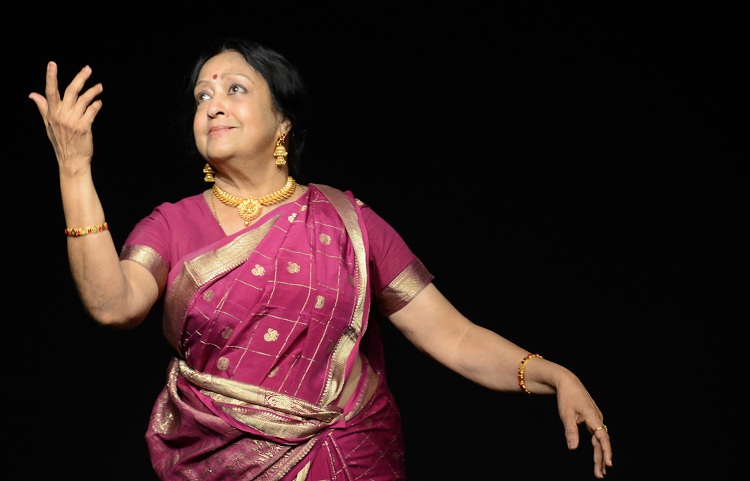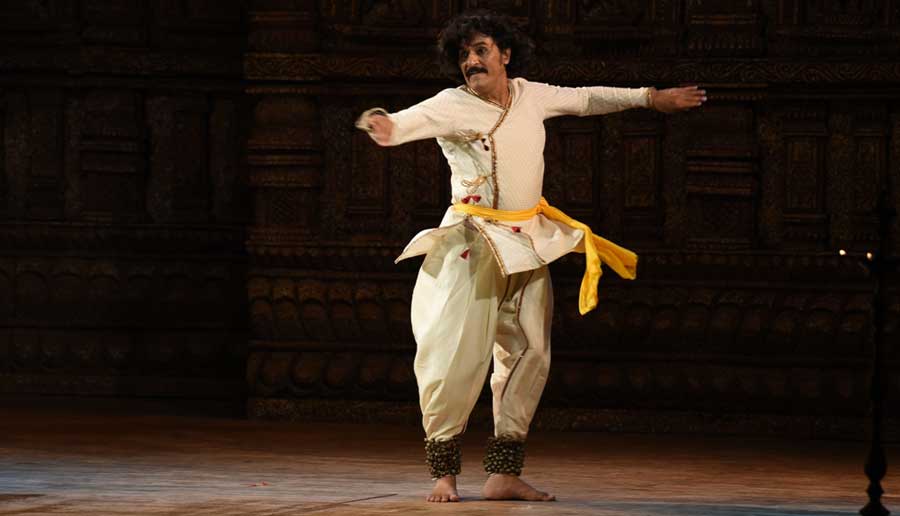Sangeet Natak Akademi recently celebrated World Dance Day, with a lecture demonstration by the legendary dancer Sangeet Natak Akademi Fellow Padma Bhushan Dr Padma Subrahmanyam. A highly expressive dancer and extremely articulate communicator, along with her great learning, Dr Padma Subrahmanyam also revealed her witty side.
 Making the point that teaching of an art had to be direct and personal and not through a video, Dr Padma demonstrated the salient features of her style of dancing through a demonstration by her young disciple Malati Kannan. Malati represented the 3rd generation who had learnt from the doyen, her maternal grandmother and mother were disciples as well. Later, the doyen herself demonstrated how like there is “aarohan” and “avrohan” in music, there is “aarohan” and “avrohan” (ascent and descent) in dance movements too.
Making the point that teaching of an art had to be direct and personal and not through a video, Dr Padma demonstrated the salient features of her style of dancing through a demonstration by her young disciple Malati Kannan. Malati represented the 3rd generation who had learnt from the doyen, her maternal grandmother and mother were disciples as well. Later, the doyen herself demonstrated how like there is “aarohan” and “avrohan” in music, there is “aarohan” and “avrohan” (ascent and descent) in dance movements too.
Dr Padma Subrahmanyam prefers to use the term Bharatanrtyam to Bharatanatyam. Her presentation on Bharatanrtyam was dual – having established visually what she had created, through “Prayoga”, in 3 pieces, the presentation went on to the theory or “Shastra” of Bharatanrtyam. She elaborated how she had pieced together and analysed the 108 “karana” poses from various temple sculptures through extensive research and physically trying out her theory by dancing the movements herself, before arriving at a complete dance form. Terming it Bharatanrtyam distinguished it from Bharatanatyam.
[adrotate group=”9″]
She also discussed the 3 volumes on dance she had written – the first volume discusses theory, the 2nd volume is for practising dancers, she said and the 3rd volume is general. “Bharata Then and Now” is yet another book she wrote, based on a weeklong workshop she had conducted in Mumbai in the 1980s, a 4th is “Natyashastra and National Unity”.
The most startling part of her lecture demonstration was a 10-minute excerpt from her performance in Russia in 1980, where she enacted the scene of the slaying of Jataayu, to Tchaikovsky’s overture of Romeo and Juliet. The incredible choreography, each movement totally in sync with the alien music had to be seen to be believed. Playing out all the 6 characters herself, Dr Padma Subrahmanyam’s arresting performance had the audience totally dumbstruck. Apparently, the kudos from the Russian press she received at the time was equally fulsome, with a comment being that Tchaikovsky’s music came to life that evening; it was as if he had written the music only for Dr Subrahmanyam. Unbelievably, the entire choreography just happened in one flowing movement; it was as if I could see the scenes before my eyes, the doyen recalled. She added that in her experience, her creativity has always happened on its own, as if she was a receptacle only, not the author. Whenever she consciously tried to compose, she drew a blank she admitted. Such humility and honesty were really laudable.

Another amazing incident about the veracity of her research involved the late pontiff of the Kanchi mutt. He commissioned Dr Padma to make line drawings to reproduce as sculptures in a temple in Satara; it took 12 years to complete all 108 “karana” sculptures. When His Holiness saw the first few line drawings he asked if she had been to Indonesia; she replied in the negative. Later she was taken to a 9th-century temple complex that had been destroyed in the 15th century in Central Java which is now being restored. What she saw there stunned her – 52 restored “Karana” sculptures there matched her work completely! The poses were exactly uncannily similar. This completely astounding discovery confirmed firstly the extent of the spread of Bharat’s Natyashastra in the Asian region, and secondly vindicated her lifelong study which had permitted her to truly decipher and animate the frozen poses in sculptures so accurately. The sculptures she had helped create were finally installed in His Holiness’s presence, just before he passed away.
The lecture demonstration was an eye-opener; one was reminded afresh of the extent of the doyen’s wisdom and lucidity. Being webcast Live expanded the reach of the interaction.








